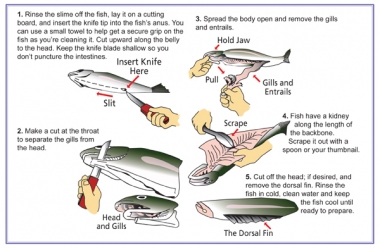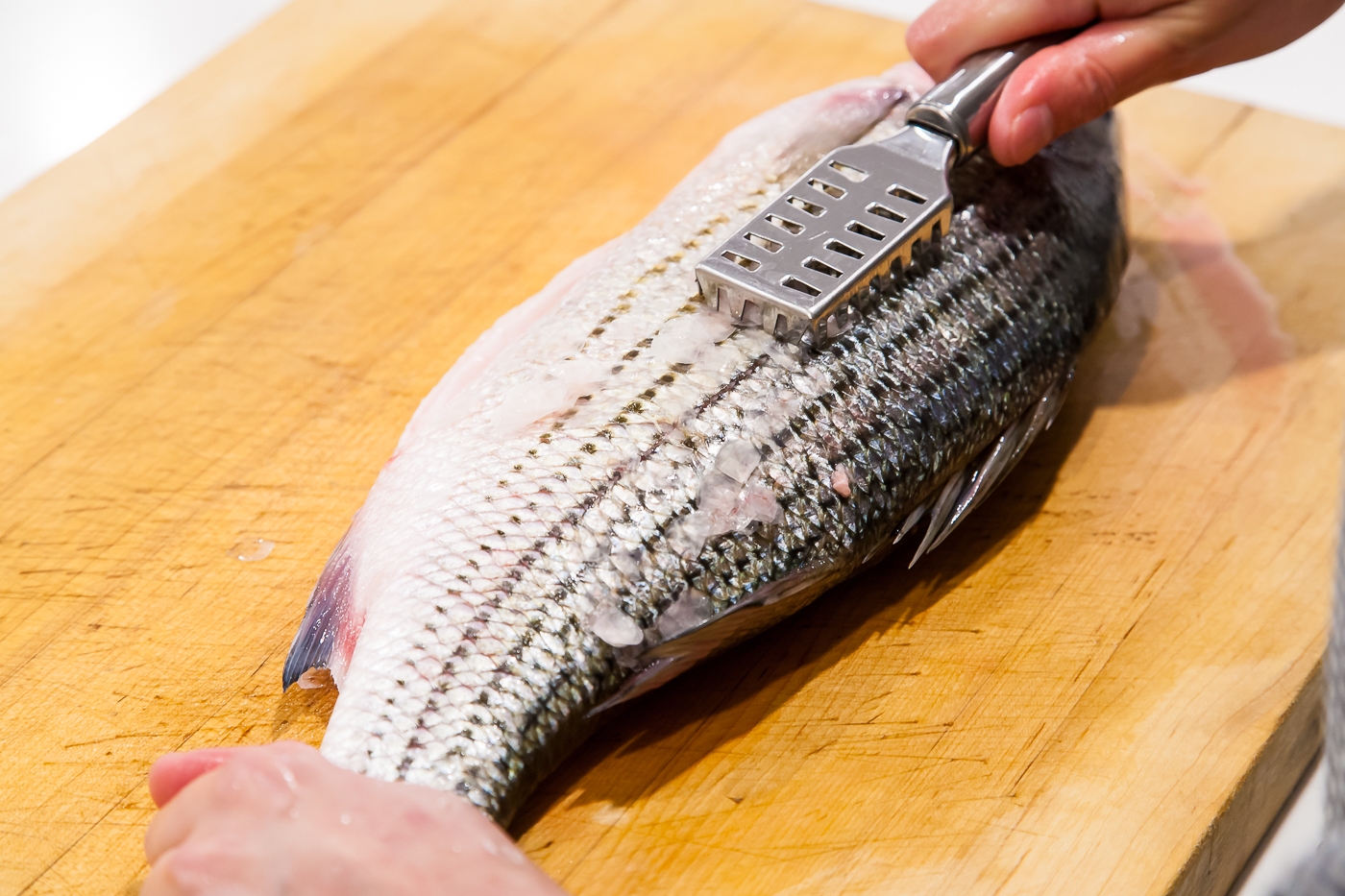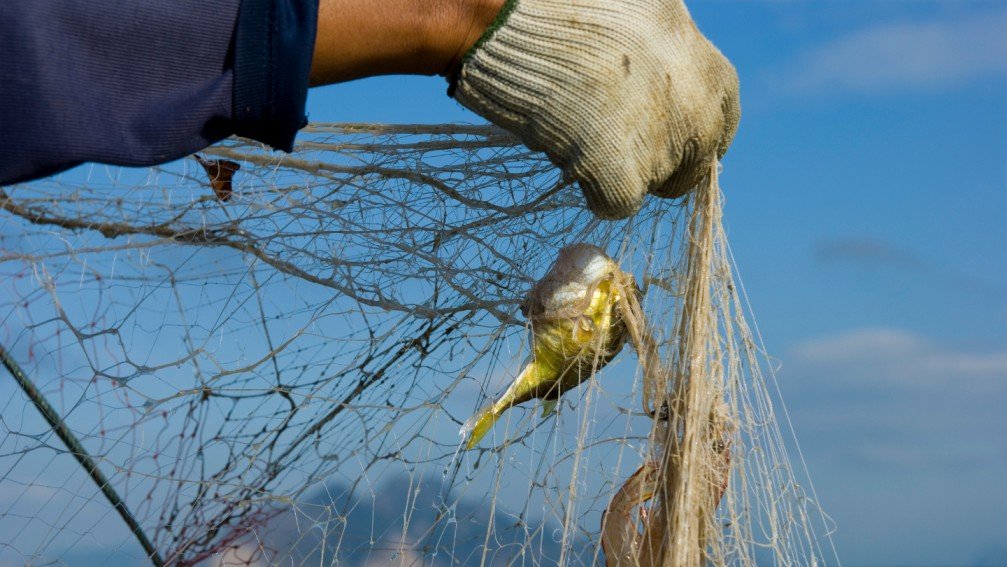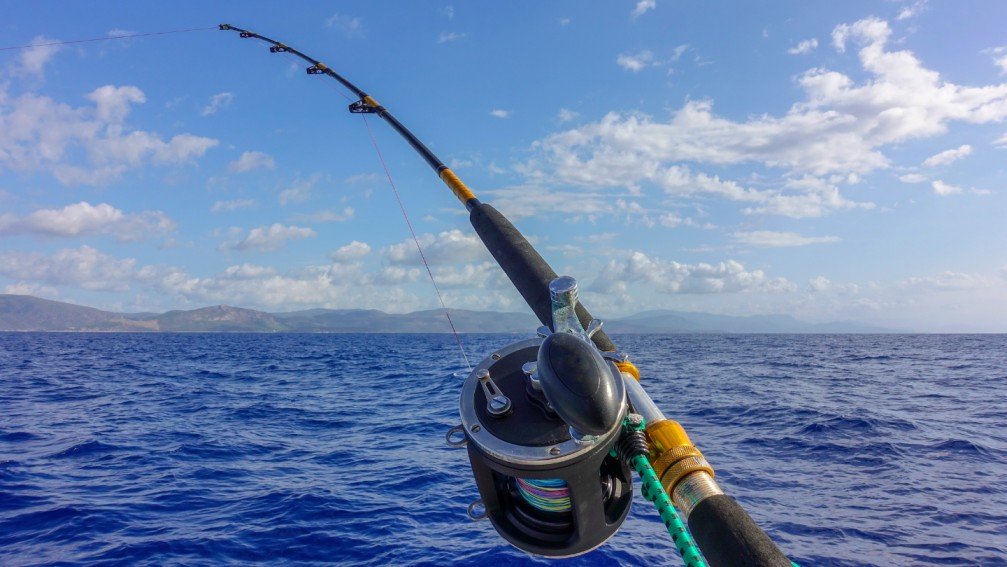To clean a fish, first remove the scales using a fish scaler. Next, make a cut along the belly and remove the guts.
Cleaning a fish is a straightforward process that ensures your catch is ready for cooking. Start by using a fish scaler to remove all the scales. Hold the fish firmly and scrape from the tail to the head. Once descaled, make a cut along the belly from the gills to the vent.
Carefully remove the guts and rinse the fish thoroughly under cold water. This method not only makes the fish safe for consumption but also enhances its flavor when cooked. Freshly cleaned fish can be grilled, fried, or baked to create a delicious meal. Always use a sharp knife and handle the fish with care to avoid any injuries.
Preparation
Preparation is key when learning how to clean a fish. With the right tools and workspace, the task becomes much easier. Below, we will outline the steps needed to prepare effectively.
Gather Tools
First, you need to gather all the necessary tools. Having them ready will make the process smoother.
- Sharp Fillet Knife: This is essential for clean cuts.
- Cutting Board: A sturdy surface to work on.
- Fish Scaler: Helps remove scales quickly.
- Gloves: For a better grip and hygiene.
- Bucket: To collect waste and remains.
Choose Workspace
Next, choose an appropriate workspace. The right environment makes the task easier and cleaner.
- Clean Surface: Ensure your cutting board is clean.
- Good Lighting: Helps you see what you are doing.
- Ventilation: Keeps the area fresh and odor-free.
- Proximity to Water: Makes rinsing the fish easier.
- Waste Disposal: Have a bucket or trash can nearby.
With tools gathered and workspace set, you are ready to clean the fish.
Safety Tips
Cleaning a fish can be a rewarding experience. But safety should always come first. Using sharp tools and handling fish properly can prevent accidents. Here are some crucial safety tips to keep in mind.
Handling Fish
Properly handling fish is essential to avoid injuries. Fish can be slippery and have sharp fins. Follow these steps to handle fish safely:
- Wear gloves: This helps protect your hands from cuts.
- Grip firmly: Hold the fish by its head and tail.
- Watch the fins: Some fish have sharp fins that can cause cuts.
Using Sharp Tools
Using sharp tools like knives requires extra caution. Always use a sharp knife for cleaner cuts. Follow these safety tips:
- Choose the right knife: Use a fillet knife designed for fish.
- Keep knives sharp: A dull knife can slip and cause injuries.
- Cut away from your body: Always cut in a direction away from yourself.
- Use a cutting board: Ensure it is stable and won’t slip.
By following these tips, you can clean fish safely and effectively. Remember, safety should always be your top priority.
Initial Cleaning
Cleaning a fish starts with the initial steps. These steps are crucial. Follow these steps to make the process easier.
Rinse Fish
First, rinse the fish under cold water. This removes loose dirt and slime. Hold the fish by the tail. Use your other hand to rinse.
Make sure to rinse inside the gills. This removes any hidden dirt. Clean both sides of the fish thoroughly.
Remove Scales
Next, you need to remove the scales. Place the fish on a clean surface. Hold the fish firmly by the tail.
- Use a fish scaler or the back of a knife.
- Scrape from tail to head.
- Apply moderate pressure.
Continue until all scales are removed. Rinse the fish again after scaling. Now, your fish is ready for the next steps.

Credit: www.wikihow.com
Gutting The Fish
Gutting the fish is a crucial step in the cleaning process to prepare the fish for cooking. Properly gutting the fish ensures the removal of internal organs, leaving you with a clean and ready-to-cook fish.
Make Incision
Start by making a small incision along the belly of the fish using a sharp knife.
Remove Innards
Reach into the incision and gently remove the innards, including the intestines and other internal organs.
Cleaning The Cavity
Cleaning the cavity of a fish is a critical step. It ensures the fish is safe and delicious to eat. Follow these simple steps for a clean and tasty fish.
Rinse Thoroughly
First, you need to rinse the cavity with cold water. This helps remove any leftover blood and debris. Hold the fish under running water. Use your hands to open the cavity and let the water flow through.
Make sure the water reaches every corner of the cavity. This will wash away any hidden particles. Repeat the rinsing process until the water runs clear.
Check For Residue
After rinsing, check the cavity for any residue. Look for any small bones, blood clots, or membranes. Use a clean cloth or paper towel to wipe these away.
Feel inside the cavity with your fingers. Make sure there are no sharp bones left. Removing these ensures a safer and more pleasant eating experience.
If you find any tough spots, scrape them gently with a knife. Be careful not to damage the flesh of the fish.
Tips For A Clean Fish
- Always use cold water for rinsing.
- Be gentle when handling the fish.
- Inspect the cavity thoroughly for any hidden debris.
By following these steps, your fish will be clean and ready for cooking.

Credit: myodfw.com
Filleting The Fish
Filleting a fish is an essential skill for any seafood lover. It helps you remove bones and get clean, ready-to-cook fillets. Follow these steps to ensure you get the best fillets from your fish.
Locate Backbone
First, place the fish on a clean, flat surface. Use a sharp fillet knife for precise cuts. Find the backbone by running your fingers along the fish’s spine. It usually runs from the head to the tail.
Once you locate the backbone, make a small cut behind the gills. This cut should be deep enough to reach the spine but not too deep. This initial cut will guide your filleting process.
Cut Fillets
Next, angle the knife towards the tail and cut along the backbone. Use smooth, even strokes for clean cuts. Keep the knife as close to the bones as possible to maximize the meat yield.
Flip the fish over and repeat the process on the other side. After cutting both fillets, remove the rib bones carefully. Use tweezers or pliers if needed. Your fillets are now ready for cooking or storing.
Below is a quick summary in a table format:
| Steps | Description |
|---|---|
| 1. Locate Backbone | Feel the spine and make an initial cut behind the gills. |
| 2. Cut Fillets | Cut along the backbone towards the tail with smooth strokes. |
| 3. Repeat | Flip the fish and repeat on the other side. |
| 4. Remove Rib Bones | Use tweezers to remove any remaining bones. |
By following these steps, you can efficiently fillet a fish. Enjoy your fresh, boneless fish fillets for any recipe you choose.
Removing Skin
Removing the skin from a fish can seem tricky. But with the right technique, it becomes easy. This section helps you learn to remove fish skin smoothly.
Grip Skin
First, grip the fish firmly. Use a clean cloth for a good hold. Start by holding the tail end. This gives you control and prevents slipping.
Peel Off
Next, use a sharp knife to cut slightly under the skin. Gently separate the skin from the flesh. Peel off the s

Credit: www.asiancookingmom.com
Final Rinse
Cleaning a fish properly ensures the best taste and texture. The final rinse is a crucial step. It removes any lingering scales, blood, and debris. Let’s dive into the steps involved.
Rinse Fillets
Hold each fillet under cold running water. Use your fingers to gently rub the surface. This helps remove any remaining scales and impurities. Make sure to clean both sides of the fillet thoroughly.
If you have multiple fillets, rinse them one at a time. This prevents cross-contamination. Also, check for any small bones and remove them carefully.
Pat Dry
After rinsing, place the fillets on a clean paper towel. Gently pat them dry with another paper towel. This step is important to remove excess water. Excess moisture can affect the cooking process.
Ensure each fillet is dry before moving on to the next step. You can use a clean kitchen towel if you prefer.
Here’s a quick table to summarize the steps:
| Step | Action |
|---|---|
| 1 | Hold fillet under cold water |
| 2 | Rub surface to remove scales |
| 3 | Rinse both sides |
| 4 | Place on paper towel |
| 5 | Pat dry with another towel |
Following these steps ensures your fish fillets are clean and ready for cooking. Proper cleaning enhances the flavor and quality of your dish.
Disposal
Proper disposal of fish waste is crucial after cleaning a fish. It keeps the environment clean and prevents bad smells. This section covers the best practices for disposing of fish waste and cleaning your workspace effectively.
Dispose Waste
Disposing of fish waste properly is essential. Follow these steps to ensure cleanliness:
- Collect all the fish guts and scales in a plastic bag.
- Seal the bag tightly to avoid any leaks or smells.
- Dispose of the bag in an outdoor trash bin.
- Avoid dumping fish waste in sinks or toilets.
- Check local regulations for waste disposal guidelines.
Clean Workspace
Keeping your workspace clean is important for hygiene. Follow these steps:
- Wash the cutting board with hot soapy water.
- Scrub the knife thoroughly to remove any residue.
- Sanitize the countertops with a disinfectant spray.
- Dry all tools and surfaces with a clean towel.
- Dispose of any used paper towels or cleaning cloths.
By following these steps, you ensure a clean and hygienic fish cleaning process.
Storing The Fish
Properly storing the fish ensures it remains fresh and safe to eat. Incorrect storage can lead to spoilage, making the fish unsafe for consumption. Follow these steps to keep your fish fresh.
Refrigerate
Refrigerating fish is essential for short-term storage. Follow these steps:
- Clean the fish thoroughly.
- Pat it dry with paper towels.
- Wrap the fish in plastic wrap or foil.
- Place it in an airtight container.
- Store it in the coldest part of the fridge.
Fish can be refrigerated for up to 2 days. Use it within this time for the best taste.
Freeze
For long-term storage, freezing the fish is a great option. Follow these steps:
- Clean and dry the fish.
- Wrap it tightly in plastic wrap.
- Place the wrapped fish in a freezer bag.
- Remove excess air from the bag.
- Seal the bag and label it with the date.
Frozen fish lasts up to 3 months. Thaw it in the fridge before cooking.
Cleaning a fish can be simple with the right steps. Follow this guide for a seamless experience. Remember, practice makes perfect. Enjoy the rewards of your effort with fresh, delicious fish. Keep these tips handy for your next fishing adventure.
Happy cleaning!
FAQs:
What Is The Best Way To Clean Fish?
To clean fish, rinse under cold water, remove scales, gut, and fillet. Pat dry with paper towels.
Should You Gut Fish Right Away?
Yes, you should gut fish right away. This prevents spoilage and maintains freshness. Prompt gutting also reduces the risk of bacterial growth.
Do You Wash Fish Before Cooking?
No, washing fish before cooking isn’t recommended. It can spread bacteria to your kitchen surfaces. Cook fish thoroughly instead.
How To Gut A Fish?
To gut a fish, make a small incision near the tail, remove the entrails, and rinse.



